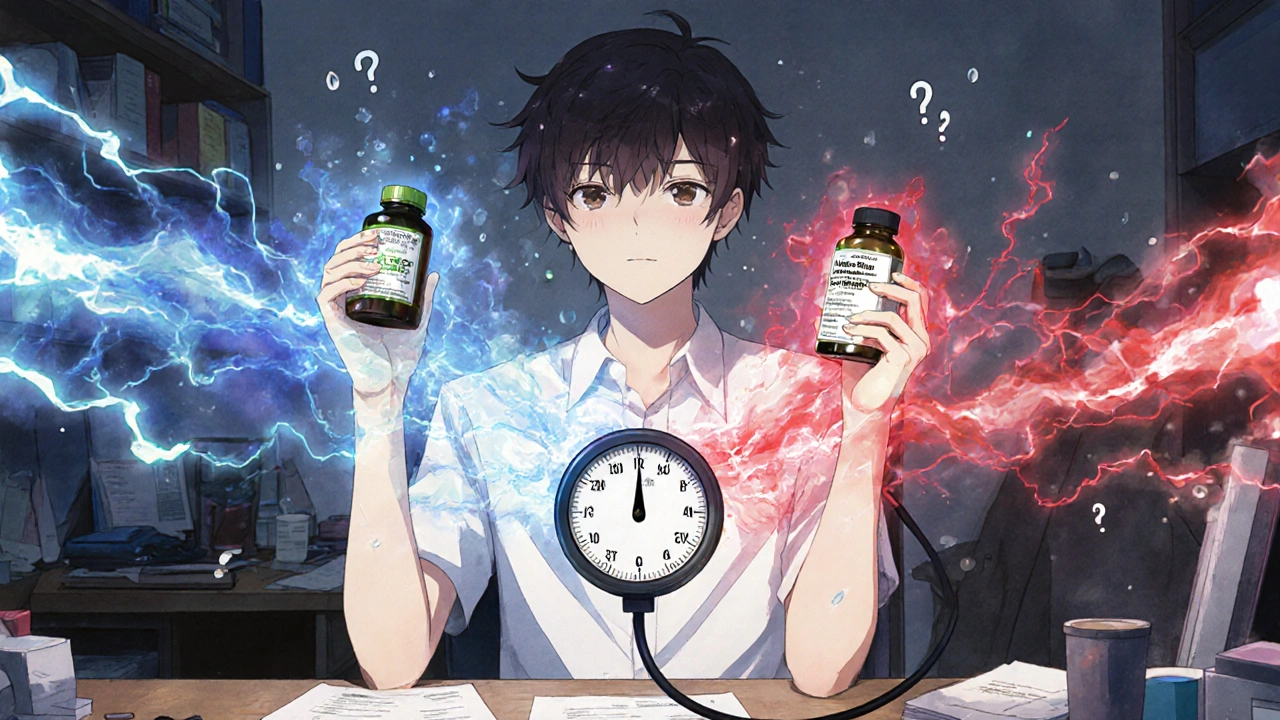Green coffee extract may lower blood pressure, but when taken with stimulant medications like Adderall or Vyvanse, it can cause dangerous fluctuations. Learn why experts warn against combining them and what to do instead.
Read MoreADHD Medication Safety: What You Need to Know About Risks, Interactions, and Proper Use
When it comes to ADHD medication safety, the set of practices and precautions that ensure stimulants and non-stimulants are used without causing harm. Also known as ADHD drug safety, it's not just about getting a prescription—it's about understanding how these drugs behave in your body, what they interact with, and how to keep them out of the wrong hands. Millions rely on medications like methylphenidate or amphetamine-based drugs to manage focus and impulse control, but safety isn't automatic. A pill that helps one person can cause serious side effects in another—especially if it's mixed with other drugs, stored poorly, or taken without monitoring.
One major risk factor is drug interactions, when ADHD meds react dangerously with other substances like antidepressants, decongestants, or even herbal supplements like St. John’s wort. Also known as medication conflicts, these can spike blood pressure, trigger heart rhythm issues, or reduce effectiveness. For example, combining ADHD stimulants with certain antidepressants can raise serotonin levels too high—a condition called serotonin syndrome that requires emergency care. Even something as simple as a cold medicine containing pseudoephedrine can turn a routine dose into a health hazard. Then there's medication storage, how and where ADHD drugs are kept at home, which directly affects their potency and safety. Also known as drug stability, improper storage—like leaving pills in a humid bathroom or a hot car—can break them down faster. Worse, if kids or teens have access to unsecured stimulants, misuse becomes a real possibility. The same rules that apply to antibiotics or blood pressure meds apply here: keep them locked, dry, and out of reach. And while many assume generics are just as safe as brand names, generic substitution, when insurance forces a switch from brand to generic ADHD medication. Also known as pharmacy substitution, it can sometimes lead to unexpected side effects—even if the active ingredient is identical. Small differences in fillers or release mechanisms can change how the drug is absorbed, especially in sensitive populations like children or older adults.
ADHD medication safety also means knowing when to speak up. If your child’s focus improves but they lose appetite or sleep, that’s not normal—it’s a signal. If you’re taking stimulants and start feeling anxious, shaky, or notice your heart racing, don’t ignore it. These aren’t side effects you just "get used to." They’re your body telling you something’s off. Regular check-ins with your doctor, blood pressure monitoring, and open conversations about sleep, mood, and appetite aren’t optional—they’re part of safe treatment. And if your insurance starts blocking your usual prescription or switches you to a cheaper version without warning, you have rights. You can appeal. You can ask for a prior authorization. You don’t have to accept a change that doesn’t work.
What you’ll find below are real, practical guides written by people who’ve been through it—how to spot dangerous interactions, how to store meds so they don’t lose power, how to handle insurance pushback, and what to do when a medication doesn’t feel right. No fluff. No marketing. Just what you need to keep yourself or your loved one safe while using ADHD meds.
